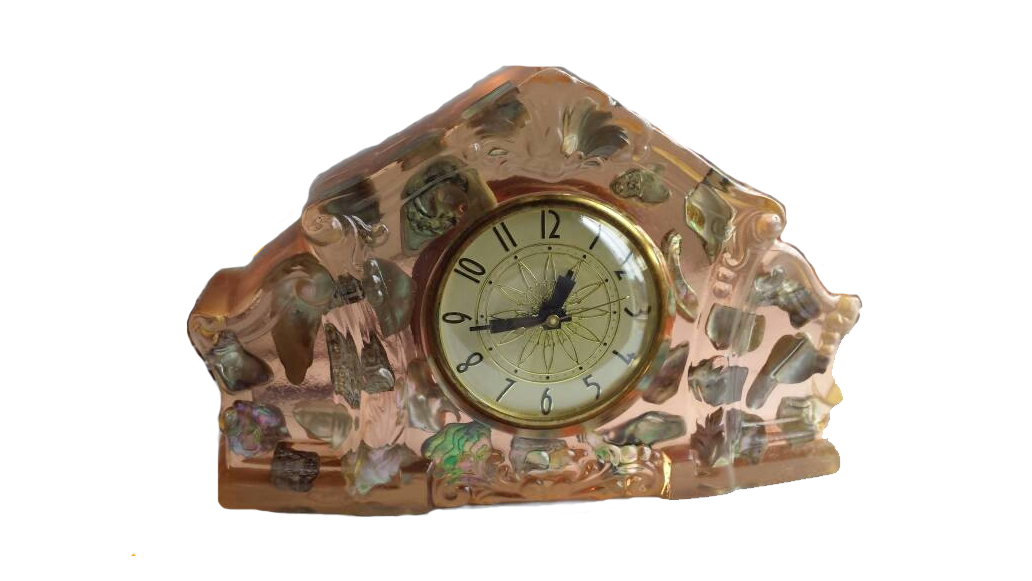Like all clocks, vomit clocks rely on complex clock movements, mechanisms made from small pieces of machinery and a motor, to keep the clock running and telling time. These movements were typically supplied by the Lanshire Clock and Instrument Corporation, made from a motor and various gears and plates to attach the motor to the clock.
Norkro Clock Company, a clock part supplier and clock repairer based out of Portland Oregon, frequently repairs Lanshire clock movements and published a guide detailing the assembly of Lanshire movements.
The guide, specifically focused on movements with the XL7 motor, provides a step-by-step instruction overview with pictures for each new process. First, a metal plate dotted with various holes for gears is screwed into the circular motor, creating what is known as the ‘movement house.’

The movement house of a Lanshire clock movement. Photo from Norkro Clock Company.
Then a series of colored gears, typically plastic, are screwed into the movement house under the metal plate, creating the smoothly-running and always-ticking clock mechanisms. Each gear holds a different name, and plays a specific role in the clock function. For example, two gears specifically control the two clock hands.

The different types of gears. Photo from Norkro Clock Company.

Gears fastened into the movement house. Photo from Norkro Clock Company.
Beyond those basics, other clocks may have setter pieces or side bands to improve clock functioning, but not all Lanshire movements contain these additional pieces. This assembly is representative of the typical Lanshire Clock Movement, and is suspected to be the type of clock movement used in vomit clocks.
See the whole guide at Norko.com!

